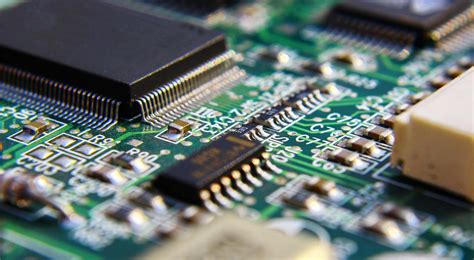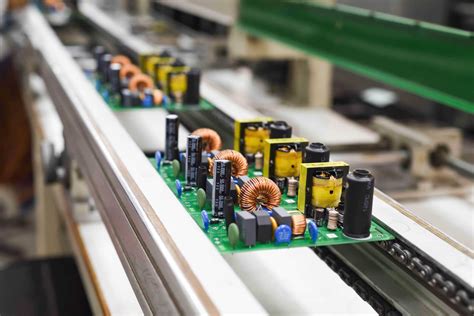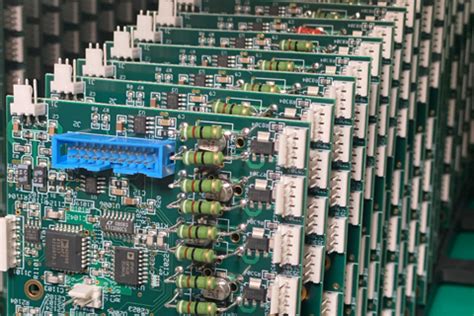Mastering Bare PCB Manufacturing: The Foundation of Electronics
Key Takeaways
Understanding the fundamentals of bare PCB manufacturing is crucial for anyone involved in the electronics industry. This process serves as the backbone of your electronic devices, significantly influencing their overall performance and reliability. Familiarity with the output from PCB manufacturing companies can help you assess quality and ensure that you’re choosing partners wisely. When analyzing pcb manufacturing cost, keep in mind that investing in high-quality materials and skilled labor often leads to better end products and lower long-term expenses. Furthermore, if you’re contemplating starting a new venture in the pcb manufacturing business, take a moment to appreciate the intricate processes involved — from material selection to production techniques. Mastery of these components not only enhances your understanding but could also result in a competitive advantage in this ever-evolving field.
Introduction to Bare PCB Manufacturing
Bare PCB manufacturing serves as a critical foundation in the world of electronics. In this introductory section, you will begin to understand how the intricacies of the manufacturing process influence the overall performance of electronic devices. Printed circuit boards (PCBs) are essential for providing mechanical support and electrical connections for various components, ranging from simple consumer gadgets to complex aerospace technologies.
You will learn that PCB manufacturing companies utilize a range of techniques and equipment to create these vital components. The journey starts with selecting the right materials, typically a combination of conductive materials like copper and insulating substrates such as epoxy resin. Understanding these elements is crucial because they directly impact the pcb manufacturing cost and, ultimately, how efficiently the final product operates.
Additionally, you should be aware that your choices in bare PCB design can significantly affect not just performance but also production scalability. When initiating your own pcb manufacturing business, you must focus on standardized processes that ensure quality while also considering how these processes might evolve as technology advances.
| Key Aspects | Importance |
|---|---|
| Material Quality | Directly impacts performance and cost |
| Process Standardization | Ensures reliability and efficiency |
| Design Considerations | Influences manufacturability |
By mastering these foundational concepts in bare PCB manufacturing, you are setting up your understanding for more complex topics such as advanced techniques that enhance performance or common challenges faced in production. The more informed you are about each aspect of this industry, the better equipped you will be to make decisions that optimize both functionality and cost-efficiency in your projects.
Key Materials Used in Bare PCB Production
When delving into bare PCB manufacturing, understanding the essential materials involved is crucial. The foundation of your pcb manufacturing business relies heavily on the choice of substrates and conductive materials. Typically, FR-4 is the most widely used substrate, made from a composite of glass fiber and epoxy resin, providing excellent mechanical and thermal properties ideal for durability in electronic devices. Other materials such as polyimide are favored for flexible PCBs, enabling more dynamic applications.
In terms of conductive traces, direct copper bonding (DCB) technology is gaining traction. It allows for a more reliable connection between the printed circuit board (PCB) layers and is cost-effective, impacting the overall pcb manufacturing cost significantly. You’ll also encounter various solder masks and surface finishes that enhance durability and improve signal integrity.
To ensure your production meets industry standards, sourcing from reputable pcb manufacturing companies that prioritize quality materials is essential. As you navigate through this process, remember that the right combination of materials not only affects manufacturing efficiency but also influences the performance and reliability of your end products.
“Choosing high-quality raw materials is indispensable; it ultimately determines the success of your products in a competitive market.”

Essential Processes in Bare PCB Manufacturing
In the realm of pcb manufacturing, understanding the essential processes is crucial for the success of your pcb manufacturing business. First and foremost, the design phase sets the groundwork for all subsequent steps. Here, engineers utilize advanced software tools to create a detailed layout of the printed circuit board, ensuring all components are accurately represented and positioned. After design comes photolithography, a critical process where a photosensitive film is applied to a copper-clad board. This technique allows for the precise transfer of circuit patterns, making it indispensable in pcb manufacturing.
Following this, etching is performed to remove unwanted copper from the substrate, effectively shaping your circuit board. Selecting an appropriate pcb manufacturing cost-effective etching solution can significantly impact overall expenses while maintaining high quality. Once etching is complete, you’ll need to prepare for drilling—this step involves creating holes for through-hole components and vias, essential for connecting different layers of your PCB.
Additionally, consider solder masking as a vital part of this process. It protects against solder bridging during assembly while maintaining electrical reliability. Lastly, surface finishing adds another layer of protection and enhances solderability—a key factor in ensuring longevity in electronic applications.
By mastering these essential stages in bare PCB manufacturing, you position yourself to work more effectively with pcb manufacturing companies and meet quality standards expected in today’s competitive market. Each step plays a pivotal role in ensuring that your printed circuit boards are reliable and perform optimally in their intended applications.
Advanced Techniques for Enhancing PCB Performance
To ensure optimal performance in bare PCB manufacturing, it is essential to adopt advanced techniques that cater to the evolving demands of modern electronics. One such technique is the implementation of high-density interconnect (HDI) designs, which allows you to achieve a greater number of connections within a smaller footprint. This is crucial when working with complex circuits where space is limited. Additionally, exploring innovative material choices such as advanced laminates or ultra-thin substrates can significantly reduce the PCB manufacturing cost while enhancing electrical performance and thermal management.
Furthermore, pcb manufacturing companies are increasingly utilizing automated processes and machines that improve precision and speed, thereby reducing human error and increasing production efficiency. Embracing surface mount technology (SMT) not only minimizes the size of component footprints but also enhances reliability due to fewer mechanical connections and improved thermal performance. Another noteworthy method in enhancing performance involves signal integrity analysis, which helps identify potential issues such as crosstalk or impedance mismatches during the design phase, saving time and resources in the long run.
All these practices contribute significantly to your pcb manufacturing business by enhancing product quality and meeting stringent industry standards more effectively. As technology advances, staying informed about these advanced techniques will empower you to elevate your production capabilities, ultimately leading to superior products that meet customer needs in an increasingly competitive landscape.
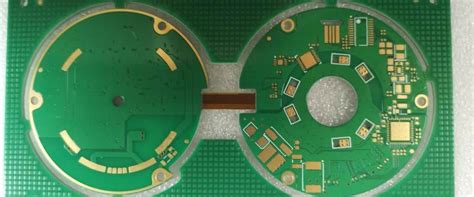
Quality Assurance and Testing Methods
In the world of bare PCB manufacturing, ensuring the reliability and performance of your products is essential. You will find that quality assurance (QA) and testing methods play a crucial role in this process. Various techniques are employed to evaluate the integrity of PCBs, ranging from visual inspections to more advanced methods like automated optical inspection (AOI) and X-ray inspection. These procedures help you identify defects early in the production process, ultimately reducing pcb manufacturing costs and enhancing product longevity. Additionally, pcb manufacturing companies often incorporate thermal cycling tests to assess how well a PCB can withstand temperature fluctuations, which is vital for devices subjected to different environmental conditions. By focusing on rigorous QA processes, your pcb manufacturing business will not only adhere to industry standards but also foster customer trust in your products. Emphasizing these aspects enables you to maintain a competitive edge while ensuring that every bare PCB you produce meets the highest quality benchmarks.

Common Challenges in Bare PCB Manufacturing
When delving into bare PCB manufacturing, you may encounter a variety of challenges that can impact the overall quality and cost-effectiveness of your pcb manufacturing business. One significant hurdle is the complexity of the pcb manufacturing process, which involves precise steps such as etching, drilling, and plating. Any deviation can lead to defects that compromise the functionality of the final product. Additionally, sourcing high-quality materials is crucial; subpar inputs can elevate the pcb manufacturing cost and result in unreliable circuits. Furthermore, the rapid advancement of technology means that pcb manufacturing companies must constantly adapt to new specifications and standards, which can be resource-intensive. You must stay informed about industry best practices while balancing quality control with production efficiency to overcome these obstacles successfully. Your ability to navigate these common challenges will determine not only the reliability of your PCBs but also your standing in a competitive market.
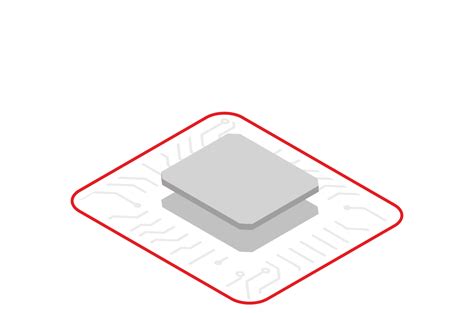
Future Trends in Bare PCB Technology
The landscape of bare PCB manufacturing is continuously evolving, driven by the demand for smaller, faster, and more efficient electronic devices. As you look into the future, you will notice that innovations in materials and processes are paving the way for highly advanced PCB manufacturing companies to meet these rising expectations. For instance, the trend toward using flexible circuits is gaining traction; this allows for PCB manufacturing that can easily adapt to various shapes and environments without compromising performance. Additionally, the integration of smart technologies into manufacturing processes is helping to reduce pcb manufacturing costs while improving accuracy and speed. As a participant in the pcb manufacturing business, you must stay attuned to these advancements, such as automation and AI-driven quality control measures, which are set to enhance productivity and ensure the reliability of your products. This proactive approach will not only keep your offerings competitive but also bolster your reputation in an ever-changing market. Embracing these future trends will be essential for mastering the intricacies of bare PCB manufacturing and delivering high-quality electronic components that meet customer demands.
Conclusion: The Importance of Mastering Bare PCB Manufacturing
Mastering bare PCB manufacturing is crucial for anyone involved in the PCB manufacturing business. It significantly influences not only the overall PCB manufacturing cost but also the reliability and performance of the final electronic products. As you delve into this field, understanding the specific materials and processes that define bare PCB production will give you a competitive edge. The expertise in selecting the right substrates and applying effective etching techniques is paramount for any aspiring manufacturer or business owner. By staying updated with the advancements in technology, you can make informed decisions that enhance productivity and optimize costs. Moreover, as you navigate through various PCB manufacturing companies, your knowledge will enable you to ask insightful questions, ensuring that you select partners who meet high-quality standards. Ultimately, your proficiency in mastering these foundational aspects can lead to more robust products and a sustainable career in electronics, making it indispensable for anyone serious about excelling in this industry.
Conclusion: The Importance of Mastering Bare PCB Manufacturing
In conclusion, mastering bare PCB manufacturing is essential for anyone involved in the electronics industry, whether you are operating a PCB manufacturing business or seeking to understand the intricacies of the production process. The significance of selecting the right materials and understanding the various processes cannot be overstated, as these elements form the backbone of reliable electronic devices. You will find that collaborating with reputable PCB manufacturing companies can enhance your understanding of industry standards and best practices. Additionally, addressing factors such as PCB manufacturing cost can play a pivotal role in determining the overall success and competitiveness of your projects. Therefore, by prioritizing education and awareness in these areas, you ensure that your ventures into bare PCB manufacturing are not only successful but also positioned for future advancements in technology. Embracing this knowledge will empower you to make informed decisions that improve both performance and sustainability in your electronic applications.
FAQs
What is bare PCB manufacturing?
Bare PCB manufacturing involves the creation of printed circuit boards (PCBs) that are free of components. These are essential platforms upon which electronic devices are built, serving as the foundation for electrical connections and circuit designs.
What are the typical costs involved in PCB manufacturing?
The pcb manufacturing cost can vary widely based on factors such as material choices, complexity of the design, and order volume. For example, simpler designs with fewer layers will typically be less expensive compared to more intricate multi-layer boards.
How do I choose the right PCB manufacturing company?
Look for reputable pcb manufacturing companies that have experience in your specific sector. You should assess their capability to handle your desired specifications and their quality assurance practices. Customer reviews and industry certifications can also provide insight into their reliability.
What challenges might I encounter in bare PCB manufacturing?
Common challenges include optimizing pcb manufacturing costs while ensuring high quality. You might also face issues related to production delays or material sourcing, which could impact timelines and budgets if not managed properly.
Can I customize my bare PCBs?
Absolutely! Many pcb manufacturing companies offer customization options to meet specific requirements such as size, shape, layer count, and material types. Be sure to communicate your needs clearly to avoid misalignments during production.
For more detailed information on pcb manufacturing processes and services offered, please click here.


